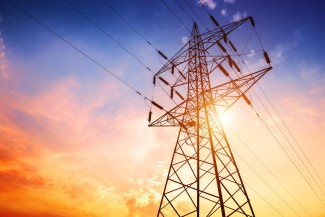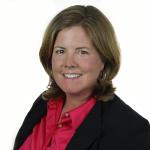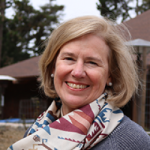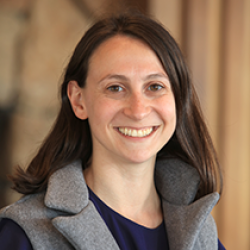Across the United States, utilities, cities, and states are taking action to address climate change and economic challenges with new and expanded energy efficiency policies and programs that aim to advance equity, build the clean energy workforce of the future, and ensure a clean, reliable grid.
Please join us next week for discussion of the latest and greatest developments in energy efficiency at the virtual National Conference on Energy Efficiency as a Resource (EER). This 11th biennial event is the premier conference on policies and programs to reduce customers' energy waste and help utilities meet customers’ energy needs.
The conference will feature keynote addresses by Senator Tina Smith (D-MN) on federal policy and the Department of Energy’s Shalanda Baker on energy equity. Aside from networking opportunities, it will also include more than 20 interactive sessions, plenaries on state climate goals and scaling energy efficiency, and 4 half-day workshops that explore equity-focused metrics, a resilient and inclusive workforce, grid-interactive efficient buildings, and health in residential program design.
For the popular regional roundup, I will moderate a conversation with seven energy efficiency (EE) leaders representing all parts of the United States. To give you a preview, I asked them to highlight some of the most exciting trends in their regions. Here are excerpts:
California: Serj Berelson, director of policy and strategy at the California Efficiency and Demand Management Council
Energy efficiency in California has had a typical busy year in 2021! First, the California Public Utilities Commission has adopted a new filing process, cost-effectiveness threshold, and—in keeping with this month's most important holiday—a mysterious new metric for EE portfolios! Second, grid reliability has been an issue of the highest importance in California over the past year due to wildfires, droughts, and other effects of climate change. This has led to a new proceeding, an emergency proclamation from the governor, and new potential opportunities for EE to meet grid needs. You'll have to attend to learn more about these developments in the state ranked #1 in ACEEE's State Scorecard!
South Central: Kelly Herbert, acting executive director, South-Central Partnership for Energy Efficiency as a Resource
One of our biggest focuses right now is grid resilience and reliability. While in the past much of Texas's peak loads have occurred in the summer heat, with more extreme weather conditions and storms occurring, we will begin to also witness these peak loads, and potential blackouts, in winter months. An increased focus on and implementation of energy efficiency measures can ease the demand on ERCOT (the Electric Reliability Council of Texas) during a winter emergency or more-predictable summer needs. We know energy efficiency and permanent load shifting (investments to permanently reduce total demand or reshape the demand profile), as well as demand response, are required to reduce the systemic inefficiencies that are driving peak load and high costs in our state.
The future of the Texas grid will rely on energy diversity through advanced technologies to ensure a system that is more reliable, efficient, and affordable for customers. But it is also likely that without a market of its own—because of the millions of individual actions required to obtain efficiency at scale—we are unlikely to approach an optimum level of efficiency investment as a society. We are working with other organizations at the Public Utility Commission of Texas to assist in the market redesign to ensure a more reliable grid this winter!
Southwest: Elise Jones, executive director of the Southwest Energy Efficiency Project (SWEEP)
One of the “latest and greatest” contributions to energy efficiency in the Southwest comes from Colorado’s 2021 state legislature, which adopted a groundbreaking four-bill clean buildings package that provides a model for slashing carbon emissions from the building sector while producing good jobs and better indoor air quality in the process. An overarching “clean heat” bill sets climate pollution reduction targets for gas utilities and directs them to craft plans to meet these through strategies like efficiency and electrification.
The other three measures, conceived and promoted by SWEEP, provide pathways for meeting these goals. A building electrification measure has electric utilities develop strategies to help their customers swap out gas-powered furnaces, water heaters, and stoves for electric ones. Another measure improves the efficiency programs of gas utilities, and the third bill directs large commercial building owners to benchmark their buildings’ energy performance and then requires low performers to improve their efficiency over time.
Midwest: Stacey Paradis, executive director of the Midwest Energy Efficiency Alliance
I’m inspired by the passion and commitment for equity and to ensure efficiency comes to underserved populations. In the Midwest, all members of the EE community (utilities, government, contractors, implementers, advocates) are prioritizing developing and running programs to bring the economic and environmental benefits of efficiency to new people and new communities. Additionally, there is a recognition and a goal to diversify and expand the EE workforce so that it is representative of all the communities across our states.
In a number of states in the Midwest, through recent legislation or executive action, energy efficiency is finally being recognized and appreciated as a key component of the clean energy future. There are supporting not only utility programs, but also efficiency programs focused on new and existing buildings. We all recognize the economic, environmental, and societal impact of our industry, but more so governors, legislators, and regulators are also recognizing it.
Northeast: Arah Schuur, executive director, Northeast Energy Efficiency Partnership (NEEP)
A flurry of legislative and executive action in recent years means that (nearly) every state in NEEP’s region now has binding emissions reduction targets. In response, cities and states across the region have advanced policies, such as building benchmarking and performance standards, that recognize the fundamental importance of building energy consumption in meeting emissions targets. The region continued to invest in robust energy efficiency programs and to evolve these programs to include new tactics, including demand management and beneficial electrification, recognizing that energy efficiency continues to be the least-cost means to meet climate and energy goals.
At the same time, the region is beginning to make progress in acknowledging and addressing the unequal distribution of energy efficiency benefits. This dialogue has intensified as the non-energy benefits of energy efficiency—from occupant health to job creation—are increasingly counted and recognized, and as community-led climate action planning has highlighted the need for equitable decarbonization. Policy makers and energy efficiency councils have responded, forming equity advisory groups, incorporating equity targets and incentives into program design, and passing new laws that require assessing impacts of energy and climate decisions with an environmental justice lens.
Southeast: Aimee Skrzekut, president of the Southeast Energy Efficiency Alliance
Recently there has been a shift among utilities, regulators, and decision makers in the Southeast toward recognizing the need for climate change mitigation and adoption strategies that highlight the benefits of energy efficiency and prioritize equitable solutions. Like many places across the country, cities and states in the Southeast are working to improve the air quality and efficiency of schools and homes and setting electric transportation goals. In addition to this progress, the Southeast is taking significant leaps forward in adopting building codes, transforming the energy workforce, and adapting to the impacts of climate change. Regulators are adopting more robust building energy code standards and processes that promote healthier, more resilient homes, schools, and workplaces.
In response to stronger storms driven by climate change, public service commissions are reviewing grid resiliency and investing in upgrades. The movement toward an energy-efficient Southeast depends on private and public investment in a more diverse workforce. Workforce development at technical colleges, nonprofits, and historically black colleges or HBCUs will provide a broader and more diverse candidate pool and ultimately a workforce that can support the energy needs of all communities.
Northwest: Susan Stratton, executive director of the Northwest Energy Efficiency Alliance (NEEA)
Heat pump technology has been at the forefront of NEEA’s accomplishments, with a solid 10% of new electric water heaters capturing this technology. Natural gas heat pump technology is on the way as well. To enhance the Northwest’s reach with market transformation, NEEA is working with Midwest states and other interested parties to share our market transformation knowledge base so that we can better collaborate for greater influence with manufacturers, distributors, and retailers for more-efficient products.
ENERGY STAR® is one example of such a broad market transformation success. Other national collaborations like PAWS (the Partnership for Advanced Window Solutions) and the AWHI (Advanced Water Heater Initiative) can also enhance the leverage of our local efforts. Further, we know that the future value of energy efficiency lies in connected buildings that can contribute capacity to the grid. There’s lots of work to do!










